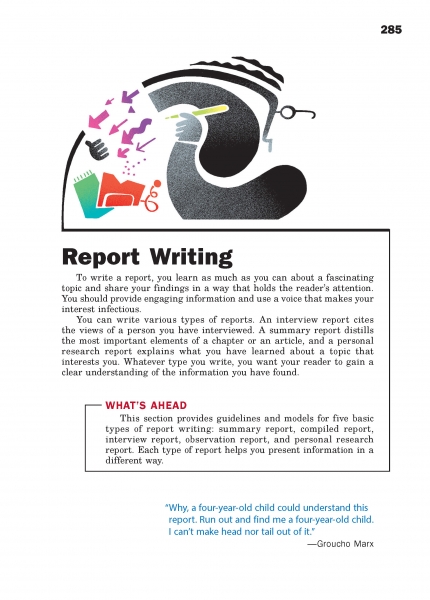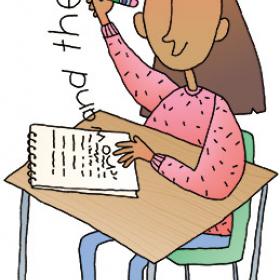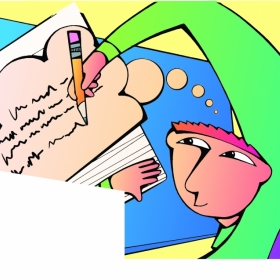Page 285 from

Start-Up Activity
Give students 5-10 minutes to brainstorm a list of words or phrases associated with "reports." Suggest that they consider the form, content, voice, and style of reports during their brainstorming sessions. Ask for volunteers to share some of their ideas. It's likely you'll hear some variety of these words: "fact-driven," "serious," "academic," "scientific," and so on.
Commend your students for their ideas, and then discuss how it's tempting to think that reports must include “just the facts.” Discuss how reports that focus on scientific research, observations, or interviews should share with the reader the main points about the topic. However, a careful reading of most reports shows that they do much more. For example, the writers of the samples in this chapter analyze, synthesize, and reflect upon the information in their reports in personal, charismatic, and poignant ways. The writers are able to do so because they have a sincere interest in the topics. For students to write successful reports, they too will need to choose topics they truly care about.
Think About It
“There is no human being from whom we cannot learn something if we are interested enough to dig deep.”
— Eleanor Roosevelt

Start-Up Activity
Give students 5-10 minutes to brainstorm a list of words or phrases associated with "reports." Suggest that they consider the form, content, voice, and style of reports during their brainstorming sessions. Ask for volunteers to share some of their ideas. It's likely you'll hear some variety of these words: "fact-driven," "serious," "academic," "scientific," and so on.
Commend your students for their ideas, and then discuss how it's tempting to think that reports must include “just the facts.” Discuss how reports that focus on scientific research, observations, or interviews should share with the reader the main points about the topic. However, a careful reading of most reports shows that they do much more. For example, the writers of the samples in this chapter analyze, synthesize, and reflect upon the information in their reports in personal, charismatic, and poignant ways. The writers are able to do so because they have a sincere interest in the topics. For students to write successful reports, they too will need to choose topics they truly care about.
Think About It
“There is no human being from whom we cannot learn something if we are interested enough to dig deep.”
— Eleanor Roosevelt




